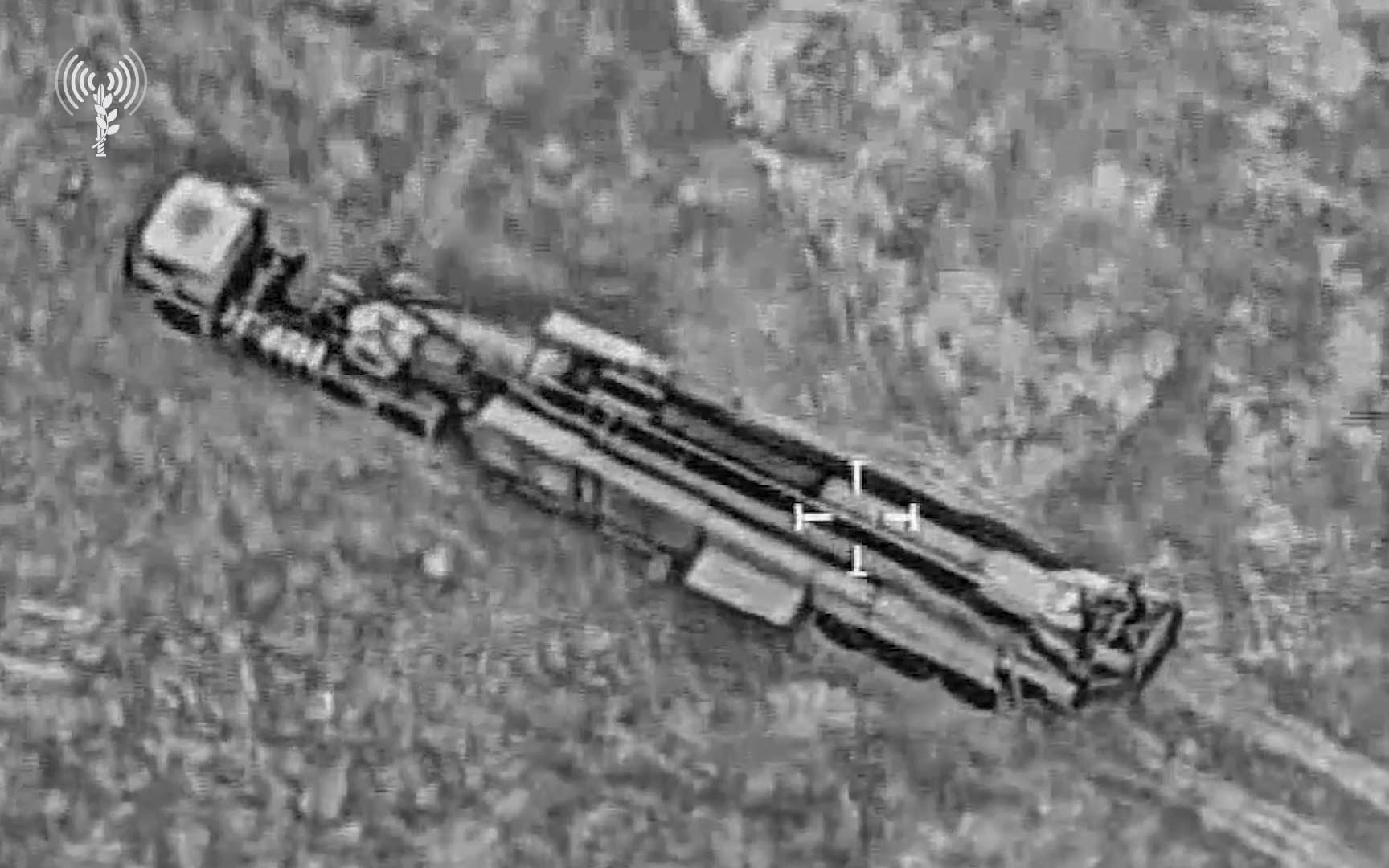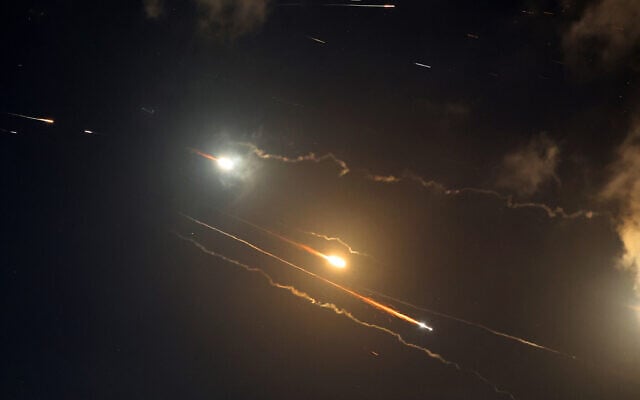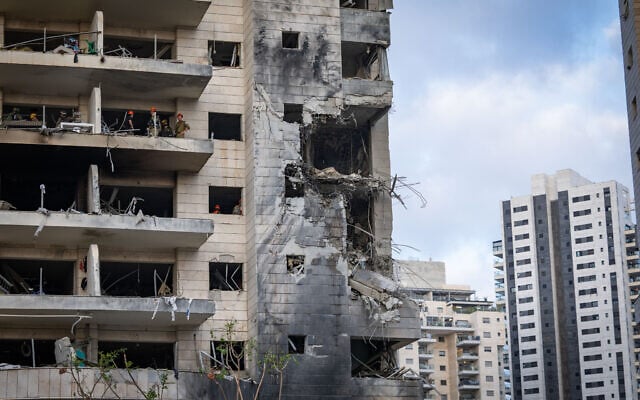



The Israeli Air Force has destroyed a third of Iran’s ballistic missile launchers and is managing to disrupt “extensive parts” of Iran’s attacks on Israel, Israeli Defense Forces Spokesman Brig. Gen. Effie Defrin said in a press conference Monday.
He added that the Israeli Air Force has established “full aerial superiority” over the Iranian capital, Tehran.
Iran’s barrages have consisted of some 30-60 missiles each, according to the IDF. Military officials said that Iran has sought to fire hundreds at a time, but IAF strikes on ballistic missile launchers in Iran are disrupting their attacks.
Israel began attacking Iran’s nuclear and military infrastructure in a shock campaign on Friday, saying the move was needed to thwart an immediate existential nuclear threat to the Jewish state.
Iran has responded with repeated deadly barrages of missiles and drones at Israeli cities that are mostly intercepted by Israel’s air defenses.
According to Defrin, 65 ballistic missiles and dozens of drones were launched at Israel in two barrages Sunday night and Monday morning, most of which were intercepted, though three impacts killed eight people and wounded nearly 300.
Iran wanted to launch at least twice as many ballistic missiles at Israel overnight, he said. However, 20 missiles were simultaneously targeted by the IAF in Iran before they could be launched.
The IDF said that some 50 fighter jets and drones also identified and struck missile storage sites and command centers where Iranian soldiers were gathered to launch the missiles, as well as launch cells on the ground.
“We are targeting Iranian cells in real time as they launch missiles toward the State of Israel and our aircraft. The aerial capabilities we previously saw in Gaza, Lebanon, and Judea and Samaria [West Bank] are now operational in Iran,” Defrin said.
Since the start of the conflict, the IDF said, it had destroyed over 120 Iranian ballistic missile launchers, which it said is a third of what Iran had.
“These are large launchers, some mounted on trucks and deployed across Iran. Each launcher was ready to fire dozens of missiles at Israel’s home front and strategic assets. These strikes caused the regime to launch only half of the missiles it had planned in last night’s barrage,” Defrin said.
“The Israeli Air Force is pushing eastward,” he said. “We will reach more targets, conduct further strikes, and continue to act in pursuit of the operation’s objective, to neutralize the existential threat from Iran, from its nuclear project to the regime’s missile array.”
On Monday afternoon, the IDF issued an unprecedented evacuation warning for a large section of Tehran, ahead of Israeli strikes.
“Dear citizens, for your safety, we ask you to immediately leave the mentioned area in District 3 of Tehran,” the IDF Persian-language spokesman Master Sgt. (res.) Kamal Penhasi, said in a Persian-language message. “In the coming hours, the Israeli army will operate in this area, as it has in recent days throughout Tehran, to strike the Iranian regime’s military infrastructure.”
Defrin said that “in addition to the launchers, we also struck missile storage and production sites” in the overnight strikes.
IAF fighter jets also attacked over 20 command centers belonging to the Quds Force and the Iranian military in Tehran, relying on precise intelligence, the military said.
The Quds Force is a powerful branch within the Islamic Revolutionary Guards Corps that sends fighters abroad and directs and funds foreign terror groups like Lebanon’s Hezbollah.
The IDF said the centers it struck were used by the Quds Force “to plan terror attacks against Israel via the Iranian regime’s proxies in the Middle East.”
“The Quds Force has been the main conduit for many of the terrorist attacks and assaults against Israel in recent decades. Now, the command centers where these attacks were planned have been completely destroyed,” Defrin said.
He said the “headquarters were deliberately placed in civilian buildings and high-rises.”
“The regime’s leaders believed that doing so would hide them and keep them immune. They were mistaken. The Intelligence Directorate located them, and the Israeli Air Force struck them with precision and accuracy,” he said.
Additionally, the military said the IAF conducted waves of strikes in Isfahan, central Iran, overnight, hitting over 100 targets.
In the morning, the military said the IAF identified several trucks, carrying surface-to-air missile launchers and other weapons, moving from western Iran toward Tehran “in an attempt to escape IDF strikes.”
Strikes were then carried out on the trucks, the IDF said, attaching footage.
The strikes continued on Monday afternoon, with a military official telling The Times of Israel that the IAF had begun a new wave of airstrikes in central Iran.
The Tasnim news agency also claimed Israel bombed a fire department building in Musiyan in the western province of Ilam, publishing a video of smoke rising from the site.
The semi-official news outlet, which is closely linked to the Islamic Revolutionary Guards Corps, said a separate strike took place in the central region city of Kermanshah. It claimed a hospital was damaged in the attack, carrying a video showing shattered glass, collapsed ceilings, and extensive damage in patient rooms.
The Mehr News Agency reported that Israel hit sites in Parchin. The Iranian outlet posted a video showing air defense systems activating in the area in response to strikes.
The IDF confirmed Monday that four Iranian intelligence officials, including the chief of the Intelligence Organization of the Islamic Revolutionary Guard Corps, were killed in an IAF strike in Tehran the day before.
The IDF said the strike carried out by fighter jets hit a building in the Iranian capital where several Iranian intelligence officials were gathered.
The strike killed IRGC intelligence chief Brig. Gen. Mohammad Kazemi, his deputy Hassan Mohaqiq, and the intelligence chief of the IRGC Quds Force and his deputy, the military said.
On Sunday, Iran confirmed the deaths of Kazemi, Mohaqiq, and another intelligence official.
“These senior officials played a central role in formulating the situation assessment in Iran and in planning terror activities against Israel, the West, and countries in the region,” the IDF said.
While Israel has been attacking Iran, the Islamic Republic has launched some 350 ballistic missiles at Israel since Friday, the vast majority of which were intercepted, according to fresh IDF statistics.
Some 40 missiles were fired in the latest barrage at around 4 a.m. Monday, which struck central Israel and the Haifa area.
There were three major impact sites in the overnight attack, which killed eight people and wounded 95. Four were killed in Petah Tikva, three were killed in Haifa, and one was killed in Bnei Brak.
In all, 24 people have been killed in Iran’s ballistic missile attacks since Friday.
Iran’s Revolutionary Guards claimed its latest attack employed a new method that caused Israel’s multi-layered defense systems to target each other, but Israel has long acknowledged that its air defense array is not hermetic, with 5-10% of the missiles “leaking” through and impacting Israel, officials said.
The total includes missiles that the IDF says it did not try to shoot down “according to protocol,” allowing them to strike open areas without causing damage to any critical infrastructure, as well as missiles it failed to intercept that hit urban areas and caused casualties and damage.
The military has urged Israelis to heed Home Front Command instructions to take shelter in safe rooms and bomb shelters when incoming missile warnings are received.
Most of Iran’s ballistic missile fire has been aimed at Tel Aviv and Haifa — which are densely populated — and to a lesser degree, the Beersheba area. Thus, the few missiles that are not intercepted are likely to cause harm.
Times of Israel staff contributed to this report.


